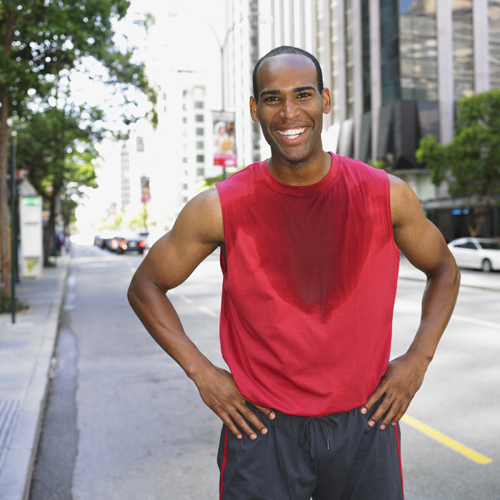10 Tips For Running In The Heat

Don't let the heat keep you from running or walking. Try the following tips to keep yourself running and walking strong during the hot summer months.
1. Run in the early morning or early evening.
2. Find an alternate route that provides more shade, or hit the trails which usually provide more protection from the sun.
3. Hydrate well before your run or walk. Drink about 20 oz of water about 2 hours before your run/walk. This will help hydrate you as well as giving you time to void it before your run/walk. In addition to hydrating before your run, make sure you carry water or your favorite sports drink with you on the run by either wearing a hydration belt with one or more bottles, carrying a handheld bottle, or a hydration pack. If you don't like wearing a belt, pack, or using a handheld bottle, be sure to place some water/sports drink along your route (just be sure to go back and collect any empties). You can also plan a route that goes by public water fountains or a convenient store (be sure to put a couple dollars in a plastic baggie, fold it up, and slip it in your pocket.
4. If you have a hydration belt with multiple bottles, fill one bottle with water or sports drink to drink, and fill one of the other bottles with ice water. The ice water isn’t to drink, but instead, you can pour it on your head during your run. Regularly pouring a little water on your head/body during your run can help to increase the evaporation-cooling effect.
5. Don't wear cotton! Be sure to wear tops and bottoms made of lightweight technical fabrics designed to wick away moisture—keeping you cooler and dryer. A water-logged cotton T-shirt can actually slow down the evaporation-cooling process—causing you to overheat.
6. Wear a visor or a hat with a bill. This will provide shade for your eyes/face, as well as helping to keep the sweat rolling off your head from getting into your eyes. Make sure to use a hat appropriate for the heat that's made of lightweight technical fabric that will promote evaporation.
7. Acclimatize yourself to the heat. To do this on your first run in the heat, you should cut your intensity by 65% to 75%. Then over the next 10 days, slowly build back to your previous level. This gives your body time to gradually adjust to the heat.
8. Run by feel. If you’re used to looking at your sports watch to check your pace, you might be discouraged at what you see on a very hot and humid day. Your body isn’t able to perform as it does on milder days. On those really hot/humid days, run more by effort.
9. Don't run alone. Having a buddy on a run is good because you can each look out for the other for any signs of heat exhaustion or heat stroke. If you do have to run alone, be sure to let someone know exactly where you'll be running and approximately how long you'll be gone so, if something does happen and you don't return, they'll be able to search for and find you quickly.
10. Check out the air quality index rating before running. If it's a code orange and you're sensitive to air pollution and/or have upper respiratory problems, you may not want to run. If it's a code red, it's not suitable for anyone to run. Most weather apps provide the air quality rating.

